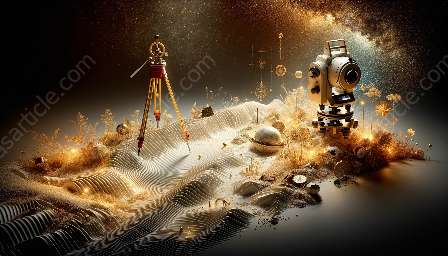Join us on a journey through the cutting-edge technologies of photogrammetry and remote sensing in 3D modeling. In this comprehensive guide, we will explore the intersection between these innovative techniques and their roles in 3D modeling and visualization, as well as their applications in surveying engineering.
Understanding Photogrammetry
Photogrammetry is the science of making measurements from photographs. It involves extracting geometric information from 2D images to create 3D models or perform measurements. By analyzing the position and orientation of objects in the images, photogrammetry can reconstruct the 3D structure of the scene.
Role of Photogrammetry in 3D Modeling
Photogrammetry plays a crucial role in 3D modeling by providing a cost-effective and non-intrusive method of capturing real-world objects and environments. Through the process of image acquisition, calibration, and processing, photogrammetry enables the creation of accurate and detailed 3D models that can be used in various industries such as architecture, archaeology, and urban planning.
Remote Sensing and Its Applications
Remote sensing involves the use of aerial or satellite sensors to collect data about the Earth's surface. It encompasses various techniques such as LiDAR, multispectral imaging, and radar, which can provide valuable information about terrain, vegetation, and land use. By capturing data from a distance, remote sensing can create detailed representations of the Earth's surface and its features.
Integration with 3D Modeling and Visualization
The integration of photogrammetry and remote sensing with 3D modeling and visualization offers a powerful platform for creating immersive and interactive experiences. By combining 3D models derived from photogrammetric data with remote sensing information, such as terrain elevation or vegetation density, realistic and dynamic visualizations of landscapes and structures can be produced.
Surveying Engineering and Geospatial Data
In surveying engineering, the use of photogrammetry and remote sensing has revolutionized the collection and analysis of geospatial data. These technologies enable surveyors to efficiently gather information about land features, topography, and infrastructure, allowing for accurate measurements and mapping of the physical environment.
Applications in Various Industries
The applications of photogrammetry and remote sensing in 3D modeling extend across a wide range of industries. From creating digital twins of historical sites for preservation to monitoring environmental changes through satellite imagery, the capabilities of these technologies are continually advancing and finding new applications.
Emerging Trends and Future Prospects
As technology continues to evolve, the synergy between photogrammetry, remote sensing, 3D modeling, and visualization is paving the way for new possibilities. Advancements in machine learning and artificial intelligence are enhancing the accuracy and efficiency of data processing, while the development of lightweight and high-resolution sensors is expanding the scope of applications for these technologies.

